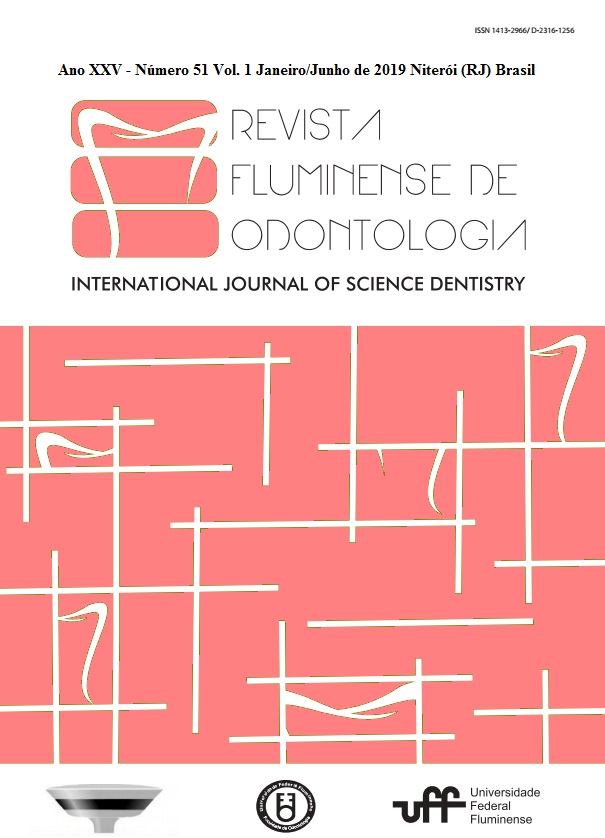TRONCO RADICULAR E SUA IMPORTÂNCIA NO ESTABELECIMENTO E PROGRESSÃO DA DOENÇA PERIODONTAL. UMA DISCUSSÃO BASEADA EM EVIDÊNCIAS
DOI:
https://doi.org/10.22409/ijosd.v1i51.36596Resumen
RESUMO
Objetivo: A lesão de furca é definida como a reabsorção óssea patológica na área anatômica onde as raízes de dentes multirradiculares divergem. Os molares são os dentes mais afetados pela doença periodontal e a maior taxa de mortalidade desses dentes pode ser explicada pela morfologia que favorece o envolvimento de furca. Portanto, o dentista deve conhecer a anatomia da furca para diagnosticar precocemente seu envolvimento e tratar com precisão. O objetivo deste estudo é discutir, embasado em evidências científicas, a importância do tronco radicular no estabelecimento e progressão da doença periodontal. Materiais e métodos: uma revisão da literatura foi realizada na base de dados PubMed utilizando os termos tronco radicular, área de pré-furca, doença periodontal, envolvimento de furca em inglês. Resultados: Quarenta e três estudos foram selecionados e sete estudos foram incluídos nesta revisão. O tronco radicular na superfície lingual é maior do que na vestibular em molares inferiores. A área de pré-furca foi encontrada em todos os molares estudados. Os pré-molares superiores também apresentam área de pré-furca e 37% são bifurcados. A altura do tronco radicular e a concavidade da pré-furca interferem no tratamento. Conclusão: As características morfológicas do tronco radicular e a profundidade e largura da área de pré-furca podem favorecer o estabelecimento e progressão da doença periodontal.
Palavras-chave: tronco radicular, área de pré-furca, doença periodontal, envolvimento de furca.
ABSTRACT
Objective: The furcation lesion is defined as pathological bone resorption in the anatomical area where the roots of multiradicular teeth differ. Molars are the teeth most affected by periodontal disease and the higher mortality rate of these teeth can be explained by the morphology that favors the furcation involvement. In this way, the dentist must know the anatomy of the furca to diagnose its involvement early and to treat with precision. The aim of this study is to discuss, based cientific evidences, the importance of the root trunk for the establishment and development of the periodontal disease. Material and Methods: A literature review was carried out in the PubMed database using the terms root trunk, pre furcation área, periodontal disease, furcation involvement in english. Results: Forty-three studies were selected and sextuplets were found at the time of the review. The root trunk at the lingual surface is larger than the buccal surface in lower molars. A pre-furcation area was found in all molars studied. Upper premolars also have a pre-furcation area and 37% are bifurcated. The height of the root trunk and the concavity of the pre-furcation area interfere in the treatment. Conclusion: Root trunks and concavity of the pre furcation area may favor the stablishment and progression of periodontal disease.
Keywords: root trunk, pre furcation área, periodontal disease, furcation involvement.





